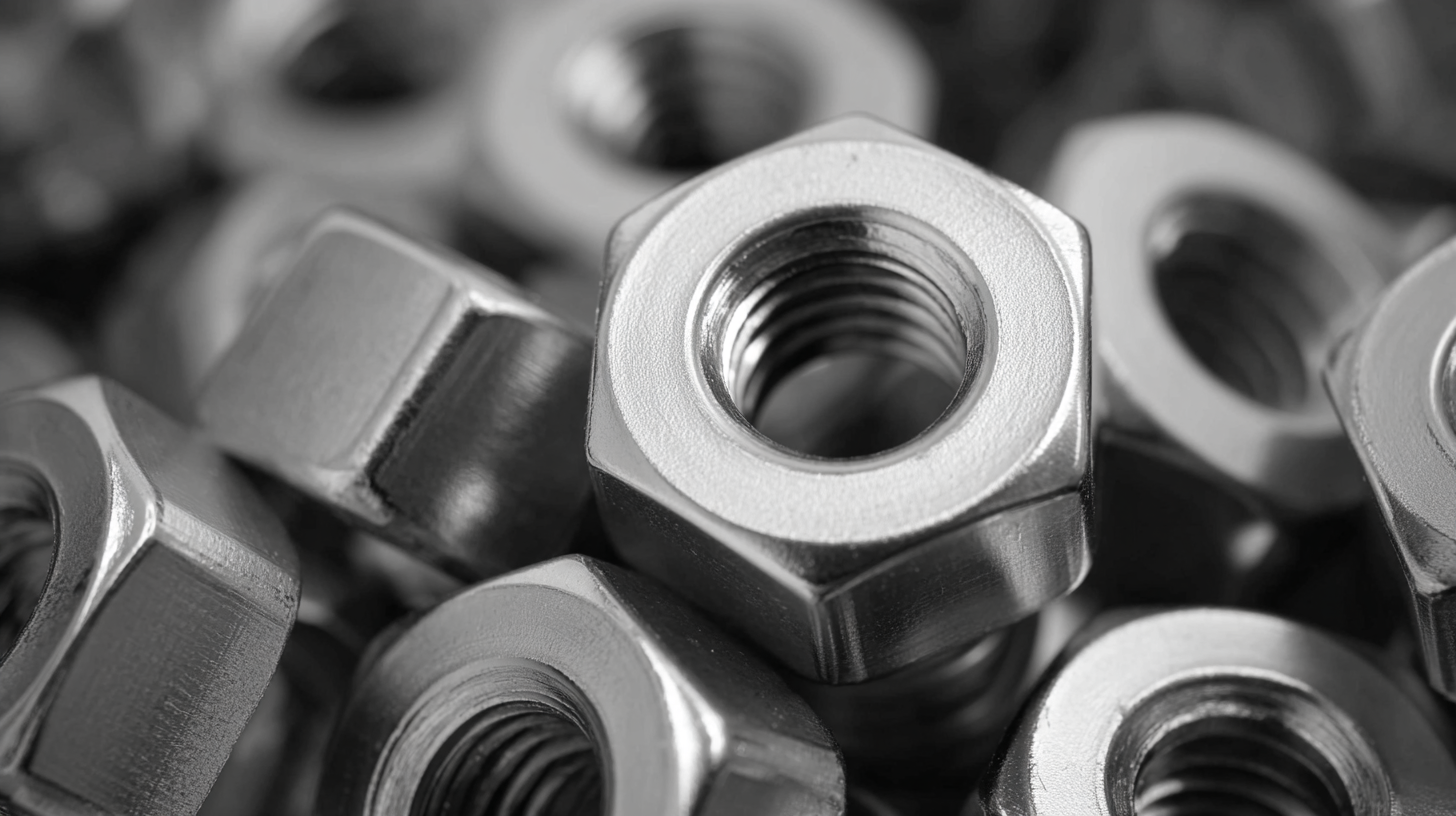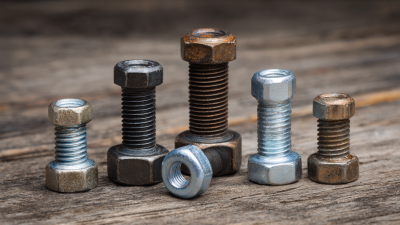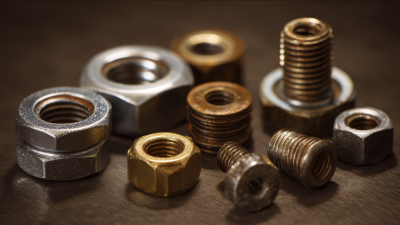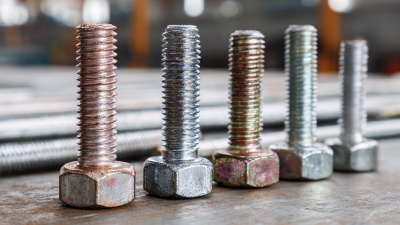Inquiry
Form loading...
Lock nuts are a crucial component in maintaining the safety and integrity of mechanical assemblies across various industries. According to a report by the International Organization for Standardization (ISO), improperly secured fasteners, including nuts, account for approximately 30% of all equipment failures, leading to significant downtime and repair costs. In particular, lock nuts play a vital role in preventing loosening due to vibration and thermal expansion, which are common in sectors such as automotive, aerospace, and manufacturing.

A study published in the Journal of Mechanical Engineering indicates that the use of lock nuts can increase the reliability of connections by up to 50%, underscoring their importance in safeguarding mechanical systems. Thus, understanding the different types of lock nuts and their appropriate applications is essential for engineers and technicians aiming to enhance assembly performance and safety.
The role of lock nuts in mechanical safety cannot be overstated. As industries evolve, the demand for reliable and efficient assembly components has surged, pushing the global locknut market towards significant growth. According to recent market analyses, the locknut sector is expected to witness robust expansion through 2032, as manufacturers increasingly focus on safety, durability, and precision in their operations. Lock nuts play a crucial role in preventing unintended loosening due to vibrations or thermal expansion, ensuring that mechanical assemblies remain secure and functional.
When incorporating lock nuts into your designs, consider the following tips to maximize their effectiveness: First, select the appropriate type of lock nut that fits your specific application, as different environments and loads may require varied locking mechanisms. Secondly, ensure proper installation and torque specifications are followed to achieve optimal locking performance. Lastly, regularly inspect your assemblies for signs of wear or loosening, as proactive maintenance can prevent potential failures and enhance overall safety.
With the locknut market booming, staying informed about the latest trends and technologies can give your operations a competitive edge. Emphasizing the importance of lock nuts in your assembly processes not only contributes to mechanical safety but also aligns with industry demands for high-quality manufacturing practices.
Lock nuts play a crucial role in mechanical assemblies by preventing loosening due to vibration and dynamic loads. One of the primary benefits of using lock nuts is their enhanced security. Unlike standard nuts, which can easily back off over time, lock nuts feature a specially designed thread that increases friction against the bolt, offering a steadfast grip that maintains the integrity of the assembly.
Another significant advantage is their ability to improve reliability in high-stress environments. In applications where machinery operates under constant movement or fluctuating temperatures, lock nuts provide consistent clamping force that prevents joint failure. Additionally, they are cost-effective; the added layer of security can reduce maintenance costs and minimize the risk of equipment failure, ultimately extending the lifespan of mechanical systems.
Overall, integrating lock nuts into assemblies ensures safety, performance, and longevity.
 Lock nuts play a vital role in preventing mechanical failures and accidents in various industries. According to a study by the American Society of Mechanical Engineers (ASME), nearly 30% of mechanical failures in assembly are attributed to loosening fasteners. Lock nuts are designed to resist vibration and prevent loosening due to dynamic loads. By providing a fail-safe against unintended disassembly, these fasteners enhance the overall reliability of machinery and equipment, ultimately ensuring operational safety.
Lock nuts play a vital role in preventing mechanical failures and accidents in various industries. According to a study by the American Society of Mechanical Engineers (ASME), nearly 30% of mechanical failures in assembly are attributed to loosening fasteners. Lock nuts are designed to resist vibration and prevent loosening due to dynamic loads. By providing a fail-safe against unintended disassembly, these fasteners enhance the overall reliability of machinery and equipment, ultimately ensuring operational safety.
To maximize the effectiveness of lock nuts, consider these tips: First, always choose the right lock nut type for your specific application. Different designs, such as nylon-insert or serrated flange lock nuts, cater to various vibrational environments and load conditions. Second, ensure that the installation torque is within the manufacturer’s recommendations. Over-tightening can lead to deformation, while under-tightening might compromise the lock nut’s efficacy. Finally, regular maintenance checks are crucial; inspecting and replacing worn lock nuts can significantly reduce the likelihood of unexpected mechanical failures.
Incorporating lock nuts into your mechanical assemblies not only enhances safety but also boosts efficiency. With a growing emphasis on workplace safety, organizations that prioritize the usage of lock nuts can also benefit from lower maintenance costs and reduced downtime, contributing to the long-term success of their operations.
When selecting the right lock nuts for various applications, it is crucial to consider the specific requirements of each mechanical assembly. Different environments may demand different types of lock nuts, ranging from prevailing torque types that maintain tightness through friction to those designed for easy installation and removal. The choice often revolves around factors like load conditions, vibration resistance, and material compatibility, which can significantly influence the safety and efficiency of the assemblies.
In addition to the basic features, advancements in technology and engineering practices have transformed how lock nuts are integrated into designs. For instance, utilizing low-friction coatings can enhance the effectiveness of lock nuts, making them suitable for high-performance applications. Furthermore, insights from fastening experts emphasize the importance of thorough testing methods, such as ultrasonic clamp load testing, to ensure that the locking mechanisms function reliably under various stresses. By carefully analyzing these considerations, engineers can select optimal lock nuts that not only ensure safety but also enhance the overall performance of their mechanical assemblies.

Lock nuts play a crucial role in securing mechanical assemblies, but their effectiveness relies heavily on proper maintenance. Regular inspection is essential; check for signs of wear, corrosion, or deformation. Any irregularities can compromise their locking ability, leading to potential failures in machinery or equipment. Additionally, ensure that lock nuts are torqued to the manufacturer's specifications. Over-tightening can lead to stripping, while under-tightening may result in loosening over time.
Another vital maintenance tip is to keep lock nuts clean and free from debris. Accumulated dirt or grease can interfere with their locking mechanisms, reducing their effectiveness. Using appropriate lubricants, when necessary, can also assist in maintaining a secure fit. It’s advisable to periodically re-evaluate assemblies for vibration and movement, as these factors can influence the performance of lock nuts. By following these maintenance strategies, you can significantly enhance the reliability and safety of your mechanical systems.
| Aspect | Detail |
|---|---|
| Function | Prevents loosening due to vibration and load |
| Material | Often made from high-strength steel or nylon |
| Types | Hex lock nuts, nylon insert lock nuts, and jam nuts |
| Applications | Used in automotive, aerospace, and machinery assemblies |
| Maintenance Tip 1 | Regularly inspect for wear and corrosion |
| Maintenance Tip 2 | Ensure proper torque settings are maintained |
| Maintenance Tip 3 | Replace lock nuts if they show signs of degradation |
| Common Issues | Loosening, stripping, or failure under stress |






